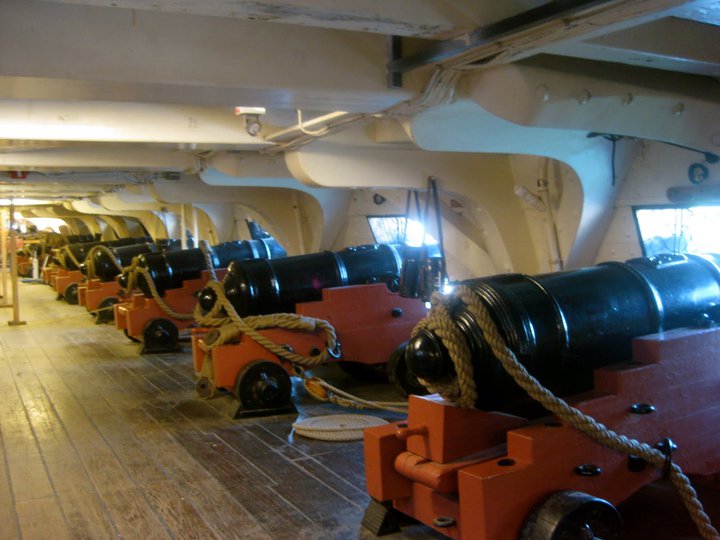
The USS Constitution - Old Ironsides
USS Constitution vs. HMS Guerriere, 19 August 1812
March 24, 2011
The War of 1812 tested the fledgling American navy against the greatest naval armada ever assembled in mankind's history.
For more than a hundred and thirty years England had no equal on the sea.
This is the story of one just one of the sea battles of the War of 1812: The USS Constitution vs. the HMS Guerriere
The U.S. Frigate Constitution left Boston, Massachusetts, on 2 August 1812, bound for a raiding cruise off Nova Scotia, the Gulf of St. Lawrence and Newfoundland.
Her Commanding Officer, Isaac Hull, was eager to find and fight one of the several Royal Navy frigates then active off North America, and on 18 August an American privateer informed him that one might be found further south. The next afternoon, some 400 miles southeast of the British base at Halifax, a sail was sighted that turned out to be HMS Guerriere, one of the frigates that had fruitlessly pursued Constitution off New York a month earlier.
Guerriere's Captain, James R. Dacres, was also spoiling for a fight.
Despite his ship's disadvantages in number and size of guns, and number of crewmen, the long British tradition of victory in ship-to-ship combat against European enemies provided reasonable grounds for Dacres' aggressive optimism.
As Constitution approached on this windy, cloudy day, Guerriere began firing alternating broadsides that produced few hits and little damage.
Constitution's return fire, limited to a few guns mounted forward, was also ineffective, but this changed markedly as the two ships drew alongside at about six in the evening of 19 August 1812.
A quarter-hour of intense gunnery by Constitution, delivered with much superior accuracy, battered Guerriere in the hull and masts. The British frigate's mizzenmast fell over the side, crippling her ability to maneuver. Constitution then moved ahead to rake Guerriere, whose bowsprit caught in the American's mizzen rigging. Firing continued while the two ships were thus tangled, and both sides prepared boarding parties. Marksmen in the mast tops blazed away at exposed personnel, with deadly effect. Many officers and men were thus killed, including Constitution's Marine lieutenant. Others, Captain Dacres among them, were wounded. As the ships separated, Guerriere's foremast collapsed, pulling down the mainmast with it.
She was now a "defenseless hulk", and surrendered at 7 PM, when Constitution approached to renew the action after making brief repairs to her modest damages. British casualties were more than five times those of the Americans, and Guerriere was beyond saving. Her surviving crewmen were taken off the next day, she was set afire and soon blew up. Constitition then returned to Boston with her prisoners, arriving on 30 August.
This battle, the first of several U.S. Navy victories in ship-to-ship contests, encouraged Americans and chagrined the British. Despite the rational excuse that Royal Navy frigates were not as large and powerful as their American counterparts, the real causes of these outcomes were inspired seamanship and vastly better gunnery.
For the rest of the 19th Century, long after the War of 1812 was over, America's Navy was credited with an effectiveness that went well beyond its usually modest size.
By the end of the War of 1812, the US Navy had scored the following number of 'prizes' [captured enemy ships]:
President -1
United States -2
Constitution -9
Congress -2
Chesapeake -1
Essex -11
Wasp -2
Hornet -1
Argus -6
Smaller Crafts -5

The USS Constitution - Old Ironsides